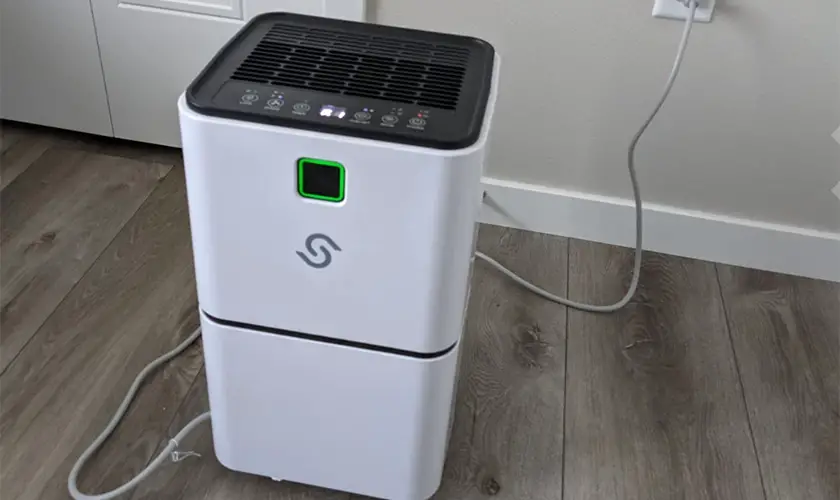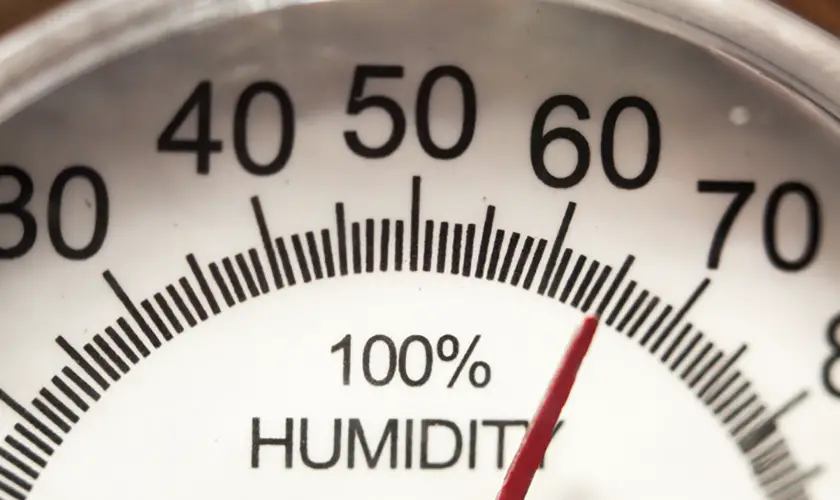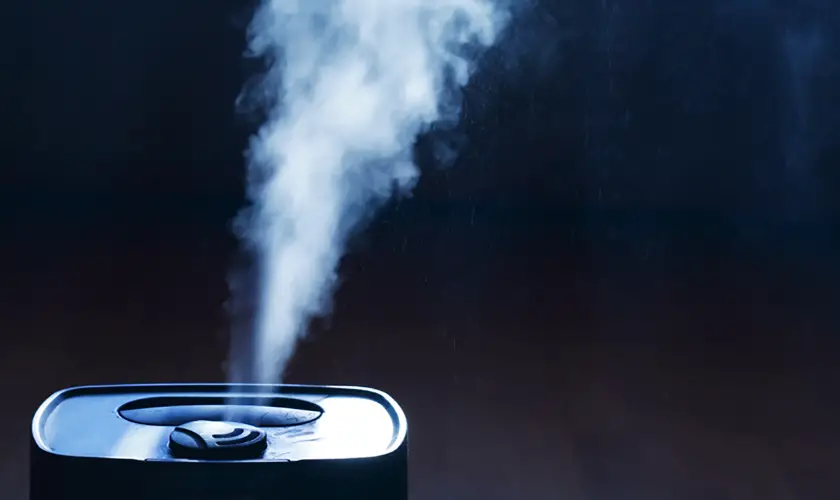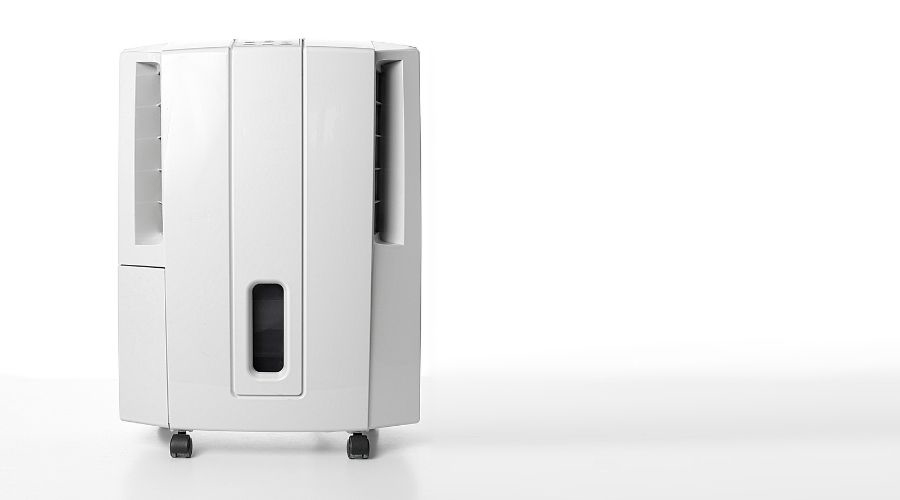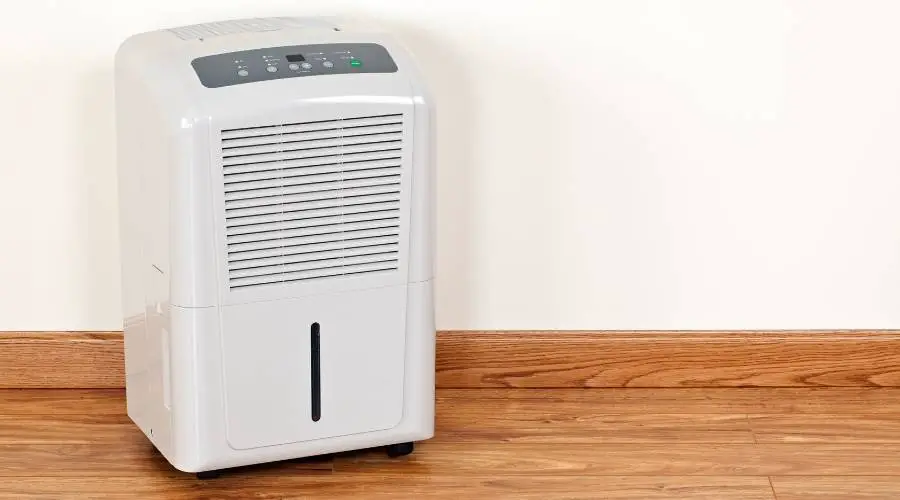
You may want to run a dehumidifier or two in your home for many reasons. Perhaps you live in a very humid area and want to make it more comfortable in your house.
Maybe you are allergic to mold or dust mites. Using a dehumidifier in your home is a great way to combat these. But how much does it cost to run a dehumidifier?
The electricity you use for a dehumidifier will be contingent on a few things.
- Firstly, the wattage of the dehumidifier.
- Lastly, the cost of electricity in the area you live.
In the United States, the average electricity price is around 12 cents per kilowatt per hour. In addition, the average wattage of a portable dehumidifier is 300 watts.
Taking both of these averages into account, while running a dehumidifier for 8 hours a day, you can expect to add about $9 to your monthly electric bill.
Something to remember is that the cost per kilowatt per hour changes state-by-state. Some states like Washington only charge around 10 cents per kilowatt per hour. In comparison, Hawaii charges over 30 cents.
As you continue to read this article, it will describe how you will need to calculate the cost of running a portable dehumidifier. In addition, this article will also provide you with some resources you can use to help simplify this process.
What Does A Dehumidifier Do?
In short, a dehumidifier works to suck in air and remove moisture from it. This helps to achieve a few things.
Firstly, our bodies produce sweat, a natural coolant for our skin. However, the more moisture in the air, the less sweating our skin can absorb to keep itself cool.
Because of the high humidity in the air, our skin will work to receive the water from the air (which is very hot in comparison), making the sweat we produce act as excess moisture that will sit and roll off our skin.
Because dehumidifiers pull the humidity out of the air, this can also help reduce some allergy-causing symptoms. An excellent example is a reduced dust mite population in areas with a lower percentage of humidity in the air.
Dust mites are a common cause of many allergy and asthma-related symptoms. These microscopic insects thrive in areas that are warm and humid. While they can still live in the regions that are not so favorable for them, they tend to steer clear of those areas.
That being said, a dehumidifier will work to make your home an unfavorable environment, thus reducing the population in your home.
Do Portable Dehumidifiers Use A Lot Of Electricity?
The amount of electricity a portable dehumidifier uses depends on a few factors. Firstly, the size and wattage of the dehumidifier you own or wish to purchase.
On average, most dehumidifiers require around 300 watts to operate. However, plenty of dehumidifiers on the market need less or much more power to run correctly.
Next, you will need to know how much your state charges per kilowatt per hour. The amount changes state by state and can change regularly based on a few factors. Energy Bot is a fantastic website that you can visit that will tell you exactly how much your state charges.
This website is also updated regularly, so the information is rarely incorrect. However, the average rate is 10.42 cents per kilowatt hour. Use this website to find out how much your state charges for electricity.
Lastly, you will need to know how long you plan to use your dehumidifier daily. The longer you use it, the more power is required for the device, and the more your electricity bill will go up.
There is another super helpful site that you can use. Learn Metrics will allow you to put the information into a graph, telling you how much it will cost to run a dehumidifier.
Taking all that information into account, running your average dehumidifier that needs 300 watts to run for about 8 hours a day and multiplying that by the national average electricity cost will add $8.69 to your monthly bill.
However, live in Hawaii, which has the highest electricity cost of 32 cents per kilowatt per hour. You will add up to $23 to your monthly electricity bill.
Conversely, Washington state charges the least amount of money per kilowatt per hour, 10 cents. Living in Washington state and using the same dehumidifier for 8 hours daily will only add $7.20 to your monthly electric bill.
So depending on your state, you can expect to pay anywhere between $7.20 to $23 a month for running your dehumidifier 8 hours a day.
Just remember the cost changes depending on the wattage of the dehumidifier and how long you are running the dehumidifier daily.
What Are The Benefits Of Using A Dehumidifier?
In a nutshell, a dehumidifier draws in air and removes moisture from it. Using a portable dehumidifier helps with a few things.
1. Makes It More Comfortable To Breathe
First, our bodies generate sweat, which is intended to be a natural cooler for our skin. The more moisture in the air, the less sweat our skin can absorb to remain calm.
Because of the high humidity levels, mostly in the air, our skin will attempt to absorb the water (which is quite hot in comparison), causing the sweat we generate to act as surplus moisture that will simply sit and roll off our skin.
Removing humidity from the air will make the atmosphere more comfortable to breathe. Using a dehumidifier can be a lifesaver for people with breathing issues like allergies and asthma. In addition, dehumidifiers help combat specific allergens like dust mites and mold.
2. Alleaviates Allergy-related Symptoms
Because dehumidifiers operate to remove humidity from the air, they can also alleviate some allergy-related symptoms. Some of these symptoms include:
- Sneezing
- Itching
- Wheezing
- Chest pain
- Eye irritation
An excellent illustration of this is the decrease in the population of dust mites in places with lower percentages of humidity in the air.
Dust mites are a common source of allergy and asthma problems.
These tiny insects thrive in warm, humid environments. While they may still exist in unfavorable environments, they prefer to avoid them. That being stated, a dehumidifier will strive to create an unpleasant climate in your house, limiting their number.
3. Limits The Amount Of Mold In The Air
Mold is another allergen linked to allergy and asthma symptoms such as coughing, sneezing, chest discomfort, and difficulty breathing. Mold, like dust mites, thrives in highly moist and humid conditions.
There are several varieties of mold, all categorized as various species of fungus that break down materials by biodegradation, making mold one of the worst things that can happen to individuals with allergies and homeowners.
Mold may become highly hazardous if allowed to grow unchecked.
Mold thrives in humid and damp home regions and thrives in areas with humidity levels ranging from 50% to 70%.
“Due to excessive moisture, houses can start getting dust mites or mold, which is extremely dangerouds to human respiratory system and overall health”
Because mold demands optimal growth circumstances, a dehumidifier works wonderfully to keep such areas from attaining ideal humidity levels. As a result, the quantity of mold in the air is reduced, as is the amount of mold that may be slowly damaging your property.
4. Gets Rid Of The Musty Smell
Do you ever get musty or pungent odors in your basement or laundry room? This stench is typically generated by wet conditions or excessive moisture in the air. Condensation and musty smells can occur when damp air touches chilly surfaces near or around your house. The growth of mold and mildew frequently produces this moist odor.
5. Improves Air Quality
Overall, dehumidifiers aid in the improvement of air quality. It increases the comfort and cleanliness of the rooms in which they are utilized. This is accomplished by eliminating moisture from the air and filtering it to make it purer. This results in the air in any room being typically colder and fresher than it was previously.
What Size Dehumidifier Is Right For Me?
Many sized dehumidifiers would be best suited for specific needs. Here we have made a chart that will easily allow you to see them in chart form:
1. Room Condition: Moderately Damp (50-60% Humidity)
| SQUARE FEET | PINTS NEEDED |
|---|---|
| 300 sq. ft. | 30 pints |
| 500 sq. ft. | 40-45 pints |
| 700 sq. ft. | 50 pints |
| 1000 sq. ft. | 60 pints |
| 1,500 sq. ft. | 70 pints |
2. Room Condition: Very Damp (60-70% Humidity)
| SQUARE FEET | PINTS NEEDED |
|---|---|
| 300 sq. ft. | 30 pints |
| 500 sq. ft. | 40-45 pints |
| 700 sq. ft. | 50 pints |
| 1000 sq. ft. | 60 pints |
| 1,500 sq. ft. | 70 pints |
3. Room Condition: Wet (70-85% Humidity)
| SQUARE FEET | PINTS NEEDED |
|---|---|
| 300 sq. ft. | 40 pints |
| 500 sq. ft. | 50 pint |
| 700 sq. ft. | 60 pint |
| 1000 sq. ft. | 70 pint |
| 1,500 sq. ft. | 90 pint |
4. Room Condition: Extremely Wet (85-100% Humidity)
| SQUARE FEET | PINTS NEEDED |
|---|---|
| 300 sq. ft. | 40-45 pints |
| 500 sq. ft. | 50-60 pints |
| 700 sq. ft. | 60-70 pints |
| 1000 sq. ft. | 70 pints |
| 1,500 sq. ft. | 90+ pints |
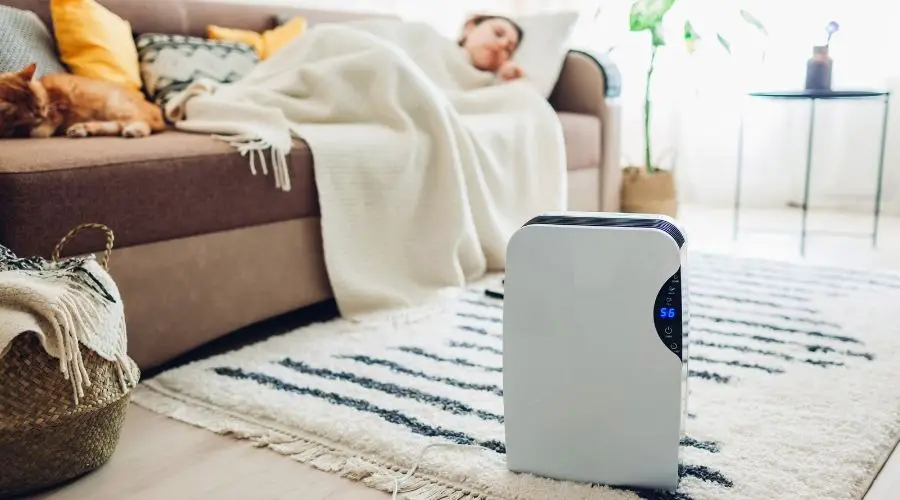
Final Thoughts
The cost of running a dehumidifier for roughly 8 hours a day is relatively cost-effective. Even though the cost of electricity varies state by state, the chances are that the increase will not affect you all that much.
That said, running a dehumidifier can help you in many ways. Running a portable dehumidifier will decrease mold growing in your home.
A portable dehumidifier will also remove the unwanted musky smell and make your home overall more comfortable.


